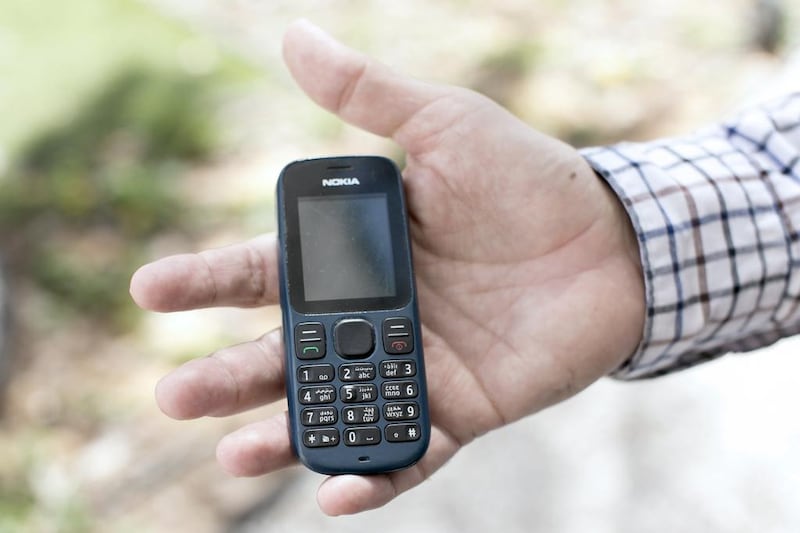My telephone is an old-school Nokia 100 with no smartphone capabilities.
While smartphones have their uses, the Nokia is a brick and carries the virtues of such: it is durable, simple and low-maintenance.
Most important is the low-maintenance bit.
People with smartphones seem endlessly to be fussing about where and when they can feed their babies, which greedily suck back energy.
The Nokia, on the other hand, needs to be charged but once a week. It reaches full power within 30 to 45 minutes of plug-in. For the purposes of this review, I tracked the phone’s battery life, and it clocked in at about 110 hours. Seriously.
For a phone I bought about two years ago, the durability aspect is also important. The Nokia alarm’s automated voice has something of the British schoolmarm to it – “It’s time to get up. The time is 8.08”, over and over – and the quickest way to silence it is to lob it against a nearby wall. Consequently the case and battery are streaked with scuff marks (the wall too, I suppose) but the phone itself never seems to suffer any damage; indeed seems incapable of suffering any damage. Truly it is a brick.
Lastly, the Nokia 100’s cost was a winner too.
Upon purchase I handed the bored shopkeeper Dh100, and he handed back more than enough change for a fancy coffee (more recent iterations of the Nokia 100 line are slightly more expensive; you may have to skip the coffee).
There are, I concede, drawbacks to not having a smartphone. First, no camera. Taking a picture, posting it, having people like it: a simple pleasure forsaken. Second, there are some people – astronauts, neurosurgeons – who need access to email at all times and for whom texting just would not do. Third, it would be handy to have WhatsApp, since that is how my softball team communicates.
Beyond WhatsApp, smartphones also have some very fancy apps such as one that tells you where your phone is if someone has stolen it. The Nokia does not have such an app. Then again, who in their right mind would steal my phone? It belongs to its owner and no other; whereas with smartphones, one sometimes gets the impression that it is the owner who belongs to the phone.
q&a hoary but hanging in
Nabila Popal, who manages the tech consultancy IDC’s handset research for the Middle East, Africa and Turkey, analyses the UAE’s feature phone market.
So just to be clear. The Nokia 100 is pretty much featureless – well, except for the solitaire game – and yet it is categorised as a feature phone?
Yes. The Nokia 100 series phones are all feature phones.
What is the market share of feature phones in the UAE?
It was 21.4 per cent as of the IDC Mobile Handsets Tracker for the fourth quarter of 2014, down from 25.2 per cent in the fourth quarter of 2013.
What is Nokia’s market share in the UAE?
Nokia’s share in feature phones is 68.3 per cent. Nokia’s share of the whole phone market in the UAE – including its smartphone share, which is really Microsoft now – is 16.4 per cent. [Note: in April of last year, Microsoft sealed the purchase of Nokia’s handset operations for about US$7.2 billion. Besides laying off about half of the staff, Microsoft has been phasing out Nokia as the brand name for Lumia smartphones.]
What are the top-selling phone models (smart and feature) in the UAE?
On the feature side it’s the Nokia 105, 108 and 107 and the Samsung E1200 that are most popular. On the smartphone side – surely as everyone guessed – for the last quarter it was the iPhone6, followed by the Samsung Galaxy S Duos and the iPhone 5S.
rmckenzie@thenational.ae
Follow The National's Business section on Twitter





